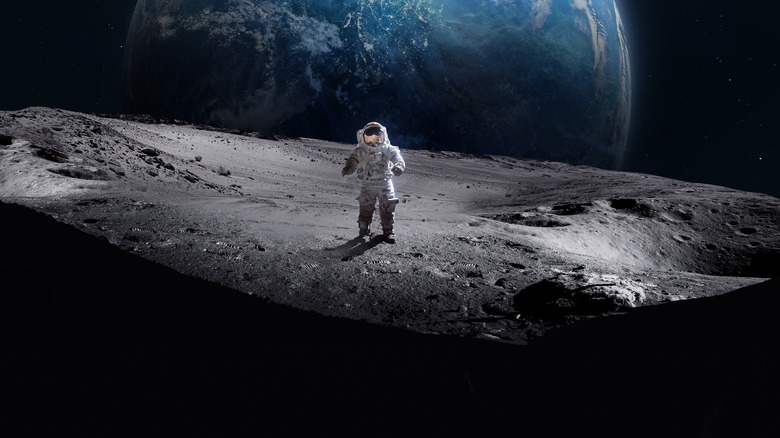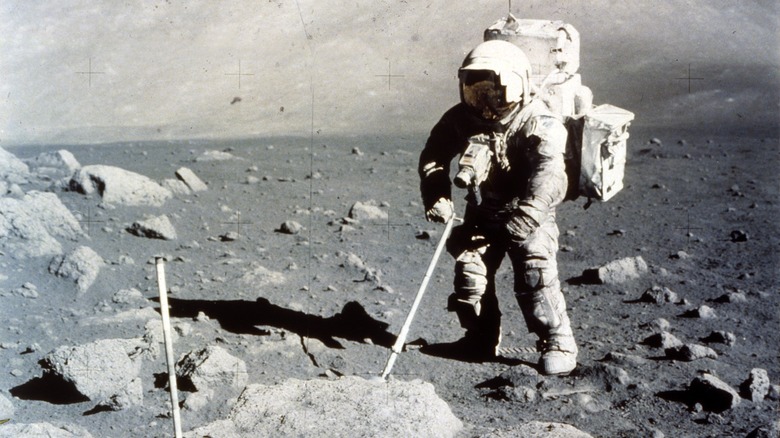How Long Would It Take To Walk Across The Moon?
The last man to walk on the moon, according to NBC News, was U.S. astronaut Eugene Cernan. The Apollo 17 commander scratched his daughter's initials onto the lunar surface before returning to Earth in December 1972, and no human has set foot on our nearest celestial neighbor since.
For all the time, money, training, and effort put into sending men, and driveable vehicles, to the moon, the amount of distance covered on the surface by all the Apollo astronauts amounts to only a few miles. By comparison, the circumference of the moon at its equator is 6,783 miles, according to Universe Today, or roughly the distance between Miami, Florida, and Tehran, Iran (in a straight line).
Meanwhile, walking on the moon isn't simply a matter of putting one foot in front of the other, like you do on Earth. Gravity is completely different there, to say nothing of the fact that you'd be wearing about 300 pounds of spacesuit.
Nearly a year to walk around the moon
As is always the case when discussing how long it would take to do a certain task, it is, on the surface at least, a matter of simple math. And in the case of the moon, we have all the variables. Specifically, according to Healthline, a human can walk at about 3.5 miles per hour. So we divide the circumference of the moon (6,783 miles) by human walking speed, and we get 1,938 hours, or about 81 days. Of course, none of this accounts for the need for rest, or moving away from obstacles, or other practical concerns.
You may have noticed another problem with this as well: Walking on the moon is completely different from walking here on Earth. You have to wear a spacesuit, and the lower gravity forces you to kind of shuffle rather than actually walk. In fact, according to Live Science, the Apollo astronauts were able to attain a walking speed of about 1.4 miles per hour on the moon's surface in their spacesuits. Doing the math once again, we wind up with a travel time of 4,845 hours, or about 202 days. Again, however, none of this accounts for the need for breaks, or for the need to avoid obstacles, etc.
It could probably be done faster now
However, all the calculations mentioned above assume that the hypothetical moon-walker is doing this experiment in Apollo-era gear. However, as Live Science notes, spacesuits have gotten a hair more advanced in the past 50 years, as have astronaut training methods. Indeed, in 2014, NASA sent some test subjects up in a plane that simulates the moon's gravity, put them on treadmills, and found that, theoretically at least, the hypothetical astronauts could achieve a walking speed of about 3.1 miles per hour, or very close to the average human walking speed on Earth.
The reason for these abrupt changes? For starters, the subjects were able to swing their arms downward — something they couldn't do in clunky Apollo-era suits — and thus propel themselves slightly downward, thus overcoming the problem of lack of gravity.
Under these new (if hypothetical) conditions, an astronaut in a modern space suit could walk around the moon in about 91 days, if he or she didn't take breaks or have to move around obstacles.


